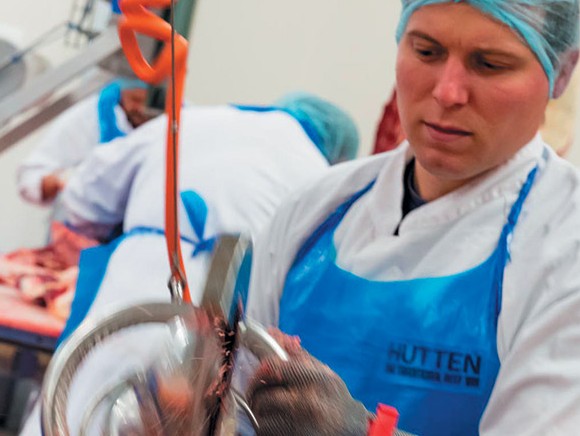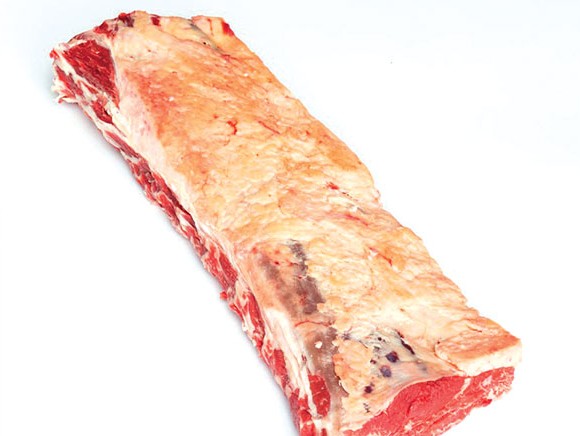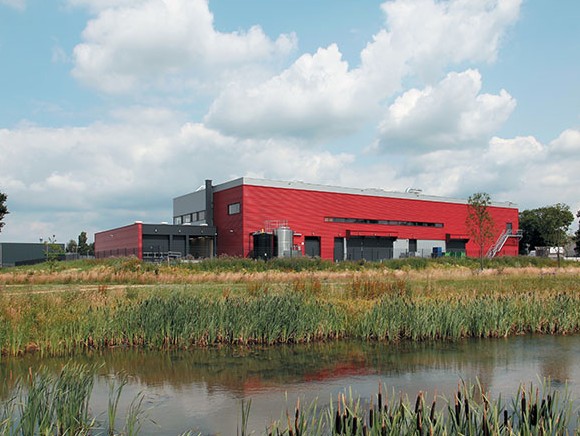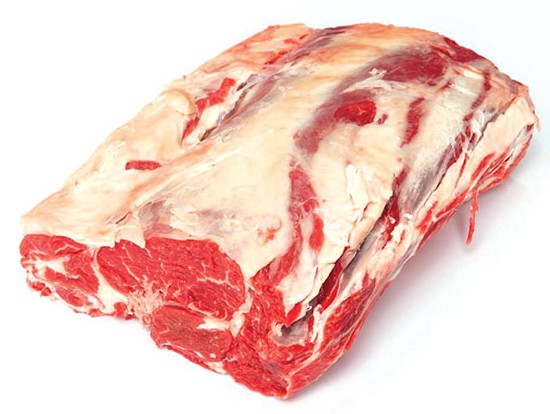
Hutten Traditional Beef opened its new premises last year. Rick Hutten, the project manager, explains the decisions the company made during that project. The building had to be sustainable, had to safeguard continuity and had to improve the quality. The company not only provides dependable craftsmanship (since 1928) but is also a pioneer in the processing of Dutch beef.
It has been mandatory to list origin details on the packaging of not only fresh beef but also fresh pork, goat’s meat, lamb and poultry since April 2015. At around the same time last year, discussions began in Europe regarding whether the origin of meat should also be listed on the labels of processed products such as cooked meats – and that debate is still ongoing. Opponents of the idea to list the country of origin on processed meat say that it is difficult from an administrative perspective and they are afraid that it will make the products more expensive. But Rick Hutten from Hutten Traditional Beef is in favour of such a listing since he believes it will give good products a competitive edge: “In the Netherlands, we should be proud of the high quality of our meat.”

Rick is the fourth generation in the family-run business. His father and uncle are both directors and co-owners, and Rick is responsible for much of the sales, including in southern Europe. According to him, Dutch meat is more highly appreciated there than in the Netherlands. “The stereotypical Dutch consumer wants high quality but at a low price. Spanish consumers value Dutch meat much more highly than Dutch people themselves. That says enough.” And although Dutch consumers are increasingly asking the question ‘Where does our food actually come from?’, Rick believes that supermarkets are not particularly eager to provide that information. “As long as it’s not compulsory, they prefer to decide for themselves what details they print on the packaging – such as ‘sustainably produced’. Yet it’s perfectly feasible that the cow was born and reared in Hungary, slaughtered in Poland and processed in Germany. What does that mean in terms of traceability? And how is the process safeguarded? I also consider the involvement of Dutch farmers in sustainability to be important.”
‘Our employees work based on cutting instructions for each and every customer’
With pride he explains that Hutten’s meat is one hundred percent Dutch. “The cows we use are all born at Dutch farms and often reared as dairy cattle. Eventually, the farmer supplies his cows to our slaughterhouse.” In the slaughterhouse, employees work with state-of-the-art techniques that comply with the strictest demands, while attention is also paid to the welfare of the animals. Quality controls ensure that the producer continues to adhere to all the relevant requirements.

The company works with a network of preferred suppliers: “We know how all of our farmers treat their cattle. All our suppliers have farms in the Netherlands which helps us to limit the number of transport kilometres. That’s better for the animals and the environment alike. Furthermore it offers traceability benefits, and local meat enjoys extra popularity among our regional customers. Restaurants throughout the province make a point of listing the products as ‘steak from Twente’ or ‘a meatball made in Overijssel’, for example.” Approximately half of Hutten’s customers are based in the Netherlands. They include restaurants, foodservice, catering companies, institutions and meat and snack processing companies. Outside of the Netherlands, the meat is mainly sold to foodservice and cash & carry clients.
Gerrit Hutten first established a small, local slaughterhouse in 1928. The company grew into a national player and started to develop a new production facility in 2010. This was completed in 2015. Rick was closely involved in the new-build project. “It spurred us on to develop a vision. We chose to commit to sustainability and to even better quality, adapted to each customer. If a client wants a piece of the loin to be cut off, we do that for them. Our employees work based on cutting instructions for each and every customer.” Since opening the new facility, the company has saved 600 litres of water per cow thanks to a number of measures: before the cleaning team arrives, all employees sweep around their own workstation; during the slaughter process the meat is transported by gravity rather than electricity and water; and the cattle trucks are washed using waste water from the processing activities that has been purified in-house. As a result, only 400 litres of water are now used in the slaughter and processing of a single cow rather than the 1,000 litres that were previously needed.

Hutten recovers heat from the body heat of the cows and from residual heat from the processing equipment. “These kinds of systems involve a high level of investment and the payback time is around ten years. That seems long, but we also take a long-term approach.” In addition, the company uses LED lighting. And it has not forgotten the needs of its 100-strong workforce: in the cutting area, the deboning is done on a platform that they can adjust to their own height to improve the ergonomic comfort. The company has also chosen to work with the most advanced tools and materials, so what more could it wish for? Rick: “We want to offer continuity, to supply a good product – adapted to each customer – and to continue to improve. We will be introducing a ‘premium selection’ line in the near future: meat that is even more closely aligned with the needs of foodservice and packed in smaller portions.”
Source: © Hutten Beef